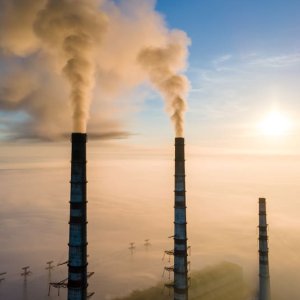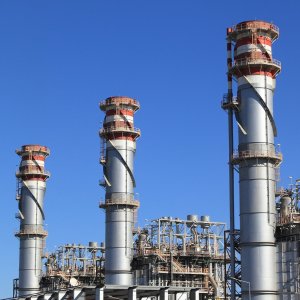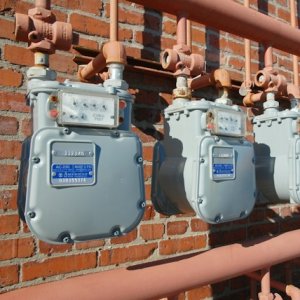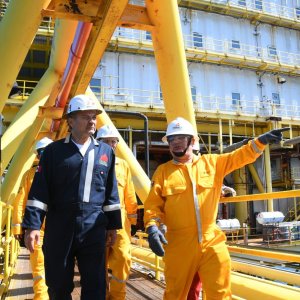Renewable Energy Empowers Rural Communities

STORY INLINE POST
Homegrown clean energy is the sustainable solution to decarbonize our global economy while stabilizing energy prices and boosting economic growth for rural communities. Despite the multiple benefits we can harness from clean energy, the media has made us all too familiar with community engagement challenges. Successful developers are no longer just measured by their technology and business acumen but rather by their interest in building relationships to foster trust and work closely with the community. As a developer for BayWa r.e., I have had the opportunity to work in many communities — I have gained neighbors in many places and have a few stories to share!
BayWa r.e. developed, built, and operates one of the largest PV projects in Mexico, located in the state of Aguascalientes. The project is 269MW in an area of 628ha where an ejido of 39 families leased their individual parcels and common land to the project under a long-term agreement. While the project itself is impressive in size, the project is unique because of the additional community benefits offered, including additional long-term sources of income for this ejido community.
Although there is broad consensus on the value of partnerships with local communities, unlocking their full potential means moving the conversation from “why to partner” to “how to partner.” Here are some of the lessons I’ve learned about opportunities to customize and collaborate on innovative solutions that benefit communities and developers – and how to develop them the right way.
Understanding the Baseline
The first step was to understand how the ejido by our project in Aguascalientes made a living and how the project could bring a positive change to their lives. For generations, this rural community, like many others in Mexico, has made a living by growing corn on their individual parcels to feed the few cows they own and sell the milk to a government-subsidized program. On average, a four-member family earned $1,700 as annual income — $141 dollars a month. This income was supplemented by other sources, including seasonal agricultural jobs but, in most cases, the yearly aggregate income did not surpass the US$6,608 needed for a family of four to be considered above the poverty line according to the World Bank.
The community did not have the resources to invest or increase crop yields or milk production and they had limited options to diversify their income. Once we understood the community’s baseline, we discussed many questions as a team: How can an investment of hundreds of millions of dollars that is expected to operate for 40 years create value for the community? If the economic and social situation of the community deteriorated over time, how would this affect the project? What was the right thing to do? Having this knowledge made it clear that to protect our investment we needed to protect the interests of the community as stakeholders of the project. This situation also created an opportunity: What if large-scale solar projects had such a positive impact on the communities that people actually wanted solar projects in their communities. How could this impact our ability to grow the solar industry?
Delivering Value to the Community, Our Neighbors
Once we had gained a good understanding of our neighbors from the ejido community, our development team knew two things for certain. First, that the money families made from leasing the land to the project had to be significantly more than their current income. Second, that we needed to identify new opportunities for the community to generate additional income.
As the first step of our plan, we decided to offer a lease agreement that would pay each landowner a set amount of money per hectare per year for 40 years. The landowner payments are set to increase yearly according to inflation and are indexed to US dollars to preserve the purchasing power of their income over time. As a result, each family increased their income by nearly 10 times the first year compared to their original livelihood.
As we continued to research for new income opportunities for the community, we decided the second part of the plan was to implement a honey harvesting project fully funded by the company. This was a natural fit for our company since BayWa r.e. is part of the growing agrivoltaics movement, the use of land for both agriculture and solar photovoltaic energy generation. Our roots in agriculture are deeper than you might expect. Our parent company BayWa AG was founded in 1923 as a seller of fertilizer, animal feed and machinery to farmers and today, we aim to co-locate renewables and agriculture where the conditions exist.
BayWa r.e. invested in the infrastructure of 400 beehives located within the project and trained the interested families. The revenues from the honey will go directly to the families involved. The first phase of the project has been an incredible success and it is expected to grow even further. The annual economic impact for each of the families is estimated at about US$2,640 or 1.55 times over their corn-milk activity. The honey project has been so successful that we are planning to double its size to benefit more families.
When we add these two income streams, our new neighbors have increased their income by 11.39 times generating an annual income of US$19,364 per family versus their pre-project income of US$1,700. It is fascinating to think how this income increase will impact the life and opportunities of generations to come.
More Solar, More Opportunities
The solar industry is investing in rural and agricultural activities through agrivoltaics. Many types of livestock and agricultural operations can see productivity boosts from the thoughtful design of solar projects, creating synergies that can enhance local economic opportunities while fostering stronger relationships with the community. Some examples are the use of slow-growing crops, such as some types of cacti as a perimeter for the project. These cacti offer a buffer zone that protects the project from dust and water and generates over time additional income to the community. Another example is the use of livestock (sheep) for vegetation control where the community will own the livestock and provide the service to the project as well as benefit from other income sources (wool, meat).
As developers of large-scale renewable energy projects, we are bringing positive change to the world in many ways. Our thriving industry is interested in continuing to deliver long-term value for generations to come, something that is even more tangible in developing nations. By aligning the interests of all stakeholders and spending time and resources to create solutions tailored to each project and community, we are paving the way for the penetration of renewable energy and all the good things that come with it.
























